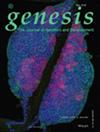CircSCNN1A inhibits the proliferation, migration and invasion of renal cell carcinoma cells by decreasing CLDN8 expression through miR-590-5p
Abstract
Background
Increasing evidence suggests that circular RNA (circRNA) plays a regulatory role in the progression of renal cell carcinoma (RCC). However, the precise function and underlying mechanism of circSCNN1A in RCC progression still remain unclear.
Methods
The expression levels of circSCNN1A, microRNA-590-5p (miR-590-5p), claudin 8 (CLDN8), cyclin D1, matrix metalloprotein 2 (MMP2), MMP9, E-cadherin, N-cadherin and vimentin were detected by a quantitative real-time polymerase chain reaction and Western blotting analysis. Immunohistochemistry assay was performed to analyze the positive expression rate of CLDN8. Cell proliferation was investigated by cell colony formation, 5-Ethynyl-2′-deoxyuridine and DNA content quantitation assays. Cell migration and invasion were assessed by wound-healing and transwell invasion assays. Interactions among circSCNN1A, miR-590-5p and CLDN8 were identified by dual-luciferase reporter assay, RNA immunoprecipitation assay and RNA pull-down assay. Xenograft mouse model assay was conducted to verify the effect of circSCNN1A on tumor formation in vivo.
Results
CircSCNN1A and CLDN8 expression were significantly downregulated, while miR-590-5p was upregulated in both RCC tissues and cells. CircSCNN1A overexpression inhibited RCC cell proliferation, migration and invasion, accompanied by decreases of cyclin D1, MMP2, MMP9, N-cadherin and vimentin expression and an increase of E-cadherin expression. CircSCNN1A acted as a miR-590-5p sponge and regulated RCC cell processes by binding to miR-590-5p. CLDN8, a target gene of miR-590-5p, was involved in the regulation of the biological behaviors of RCC cells by miR-590-5p. In addition, circSCNN1A induced CLDN8 production by interacting with miR-590-5p. Further, circSCNN1A suppressed tumor formation in vivo.
Conclusion
CircSCNN1A inhibited RCC cell proliferation, migration and invasion by regulating the miR-590-5p/CLDN8 pathway.

 求助内容:
求助内容: 应助结果提醒方式:
应助结果提醒方式:


